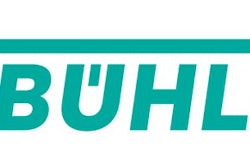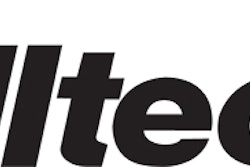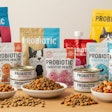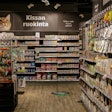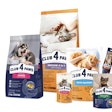
It’s been a busy few years for top pet food trends in the industry. Increasing pet humanization, consumer involvement and diversification of the market have all banded together to create a landscape with more products than shelf space and a firm need to get inside the minds of pet owners to find out what they want. Some trends have been staples of the industry for years, while others have their roots in simpler times but have grown increasingly individualized as consumers look for ways to feed their pets the best, most-catered formulas they can find. As 2017 begins, it’s time once again to take a look at what the year has in store for pet food.
Ingredients: A focus for consumers means opportunities for formulators
With consumer desire for pet food specialization comes an increased scrutiny on the ingredients in that food, and according to industry experts, it’s going to be a year of laser-like focus on what goes into their products. “Clarification of ingredients will be increasingly important, with no preservatives and no genetically modified ingredients,” said Joe Tordella, area sales manager for Bühler Aeroglide North America. “Falling by the wayside is the idea of a formulation that’s ‘scientific’ or lab based because pet owners consider it less human.”
There’s a wide range of ingredients the industry believes consumers will focus on in 2017, but superfoods seem to be on many minds. “Already mainstream in the human diet, nutrient-packed superfoods like pumpkin, kale, chia, sweet potato, kelp, broccoli, carrots, apples and local raw honey will ramp up in pet foods, treats and additives,” said Dolinda Meeker, senior account director for Product of the Year USA.
“Authenticity” is another buzzword making the rounds, as the industry believes consumers want pet foods that come ever-closer to the foods they put on their own dinner plates. “The food industry is centering on minimally processed and more-natural foods, and we expect to see similar trends for pet food,” said Juan Gomez, global director for Alltech. “Nutrition will be more holistic, a way to provide an answer to lifestyle and changes associated with aging. Pet food manufacturers will be introducing variants to address different aspects of pet health; e.g., cognitive nutrition, anti-inflammatory nutrition, lifestyle nutrition and so forth.”
Many are looking to limited ingredient diets (LID) as an increasing trend in 2017. “Pet owners have embraced LID foods, initially to hold off food allergies in their pets,” said Maria Lange, business group director, POS tracking (pet specialty) for GfK. “But the transparency of knowing exactly what their four-pawed companions are consuming is also a big plus for doting humans — one that is helping to drive further LID success.”
Speaking of transparency, industry experts are keenly aware of what consumers have to say on that subject, and expect more of the same in 2017. “Consumers will continue to demand transparency, which will lead to the increased use of certified ingredients,” said Dr. Jennifer Adolphe, companion animal nutrition registered dietician at Petcurean. “Certifications are a clear way to inform consumers about the way in which a food or ingredient is produced.”
Whatever ingredients consumers decide to focus on, getting the best nutrition for their pets will always be top-of-mind. “I do believe grain-free and raw diets are here to stay, although certainly in the case of raw diets, I believe they will always play a very small percentage of the overall market,” said CEO Scott Glover of Mid America Pet Food. “When it comes down to it, the foods that are going to be here for the long term are those that offer good ‘nutritional values’ to the pet owner and those brands that keep their formulas up to date with the latest scientific advancements.”
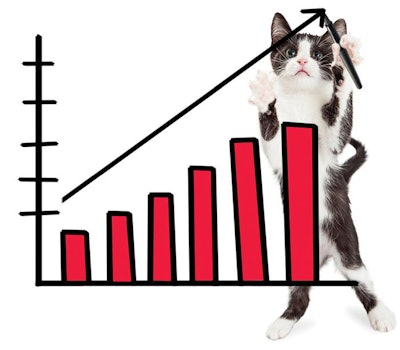
Ingredients and labeling will be hot topics to consumers in 2017, according to experts, presenting both challenges and opportunities for the industry. | adogslifephoto.Fotolia.com
Labeling: what pet food companies need to highlight in 2017
In addition to wanting to understand what ingredients are in their pets’ food, consumers want to have easy access to everything involving what their animals eat. That’s why, according to industry experts, labeling will be more important than ever. “Companies will have to reinforce and clarify their natural definition,” said Hélène Audic, Diana Pet Food’s markets and trends analyst. “A long list of low/no/reduced claims won’t be sufficient anymore to reassure pet parents who expect more transparency and simplicity. Greater emphasis will be placed on clean labels. That is why LID claims, paleo diet, organic and gently processed products such as raw, freeze dried and oven baked will clearly become mainstream, as will local and artisanal offerings.”
“Clean labels” are expected to be a significant trend. “Clean labels are a huge trend in human nutrition, with consumers demanding ingredients with which they are familiar,” said Adolphe. “For the pet food industry, this will translate into increased demand for limited ingredient diets and shorter ingredient panels on pet foods. Consumers want to make sure they feed their pets the most nutritious ingredients possible without any extras that aren’t needed.”
According to GfK, branding might even be more important than ingredients in 2017. “The natural trend will continue to shape and expand our pet vocabulary in 2017, but we expect the emphasis to be more on the food’s preparation and branding, rather than actual ingredients,” said Lange. “In different ways, ‘sustainable’ and ‘family owned’ both connote a home-grown approach, environment-friendly practices, local sourcing and the comfort of familiar brands. ‘Humane’ food also helps pet owners have a clear conscience, suggesting that protein sources were ethically raised and treated.”
And the clearest way to brand? “Overall, I think that increased focus on well-designed packaging will continue to be a big trend,” said Stefan Hartung, cofounder of Ideas that Kick. “Dog and cat food has been leading the charge for about five or six years now. But other pet foods are following suit and are changing their respective categories. Old norms are getting thrown out of the window and break-through packaging stories are being told.”
Summarizing 2017
Overall, the attitude of the industry seems to be that one can’t go wrong by looking towards human food for inspiration and new trends. “The gap between pet food and human food will continue to narrow as pet owners value pet nutrition as high as their own needs,” said Tordella. “Pet owners will continue to want high-quality pet food that can address the same health concerns that influence human food production.”
And whatever else, standing out in a highly diversified market will continue to present both opportunities and challenges for pet food companies.
Pet food in the digital age
The internet was another trend experts expect to be significant in 2017 and beyond, as consumers look online for everything from pet food education to ordering the actual pet food. “The internet continues to be a major factor in the way we receive information and purchase products,” said Scott Glover, CEO of Mid America Pet Food. “It levels the playing field and puts smaller companies on near-equal footing with the once untouchable multi-billion dollar brands. Pet food review sites are also influencing pet owners’ buying decisions by comparing labels and exposing lower-quality ingredients commonly found in major grocery store brands.”
According to Alltech, it’s another carryover from the human food and health world. “Perhaps, to a degree, we are almost there with digital nutrition,” said Juan Gomez, global director for Alltech. “The advent of activity trackers or smart watches/phones to monitor activity, calorie consumption, heartbeat and quality of sleep could be synced to a nutritional platform to provide individuals with options to achieve a level of desired fitness and health. Soon we should see similar applications for our companion animals.”
Global pet food trends in 2017
Marcel Blok, owner, Change Stranamics BV
Global growth
“China is bound to grow significantly, as is most of the Pacific Rim (with the exception of Japan). Growth in Australasia will be very limited, if any. In this region, value-growth will come from upgrading consumers because volume-growth is stagnant or may even be declining a little in view of the growing population of smaller-sized dogs. South America with Brazil as the locomotive will show a very modest growth, mainly because of the continued crisis in Brazil. Western Europe will show some growth due to upgrading consumers, more for cat than for dog. Scandinavia seems to have reached its peak, both in volume and in value. In Central & Eastern Europe the going continues to be good, which is caused by both volume and value-increase; the latter higher than the volume, again because of an upgrading consumer and a wider availability of premium propositions. Mediterranean Africa will show some decline due to political unrest and decreasing spending power.”
Global trends
“Overall, there is a steadily growing demand for grain-free and ‘fresh’ meat, both of them carving out an increasing share of the market. BARF (biologically appropriate raw food) will show further growth in Western Europe but isn't likely to grow beyond the stage of an interesting niche. In China, there is a growing demand for pet food ‘made in Europe’ — frequent recalls of US products in the United States seem to have created an image of inferiority for US pet food — but increasingly sold under Chinese brands. The use of so-called novel ingredients is only very slowly catching on, partly because of supply-chain issues, but certainly also because manufacturers lie in wait.
“In Western Europe, a few trends influencing the industry have become more and more visible: sustainability, ingredient-integrity and authenticity have become factors to take into account when developing new products. A more critical consumer (as well as the buyers of pet and supermarket chains) pay a lot of attention to this. The product must be top and the question, ‘where do you come from?’ must be answered fully and honestly. The manufacturer/brand-owner must show to act responsibly.”
Pay attention in 2017
“The top region to pay attention to remains, without any doubt, the Pacific Rim and further South East Asia, where I see that countries such as Vietnam, Indonesia and the Philippines offer a huge potential to tap into.”



